United States Air Service
USAS HistorySummary 1917-1918 Lafayette Escadrille
N.124/Spa.124 1st Observation
1st, 12th, 50th, 88th 1st Pursuit Group
27th, 94th, 95th, 147th 1st Bombardment
96th, 11th, 20th 2nd Pursuit Group
13th, 22nd, 49th, 139th 3rd Pursuit Group
28th, 93rd, 103rd, 213th 4th Pursuit Group
17th, 148th, 25th, 141st 5th Pursuit Group
41st, 138th, 638th 3rd Air Park
255th. List of Aces
United States Naval Aviation
US Naval AviationUnited States Marine Corps Aviation
US Marine AviationAircraft
 Nieuport 28
Spad VII
Spad XIII
Fokker Dr.1
Albatros D.Va
Fokker D.VII
Nieuport 28
Spad VII
Spad XIII
Fokker Dr.1
Albatros D.Va
Fokker D.VII
Website: Atlanta SEO
E-mail us
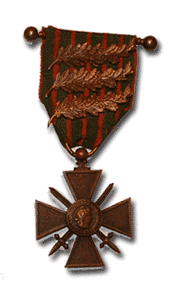
Related Links: Nieuport 17 | Nieuport 28 | Spad VII | Spad XIII | Spad XVI | Fokker D.VII and other German aircraft | Halberstadt CL.IV | Fokker Dr.1 | Albatros D.Va | Caudron G4 trainer | USN Curtiss N-9H trainer | USN Thomas Morse SC-4 | USN Hanriot HD-1 | USN Sopwith Camel | What was the first American fighter plane?
Spad VII
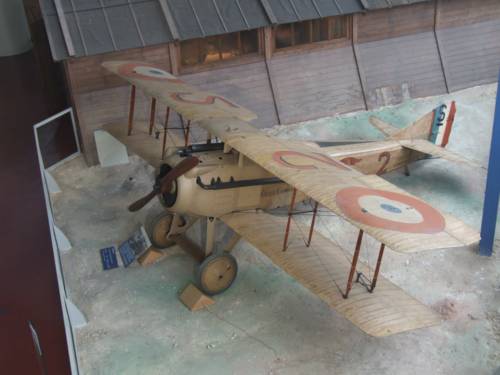
Georges Guynemer's "Vieux Charles" Spad VII (Le Bourget Air Museum)
The Spad VII was a great aircraft and was used by the Lafayette Escadrille along with various marks of Nieuports. When the unit moved to Ham in April, 1917, it transitioned from Nieuport 17s to Spad VIIs; the name changed correspondingly from N.124 to Spa.124. When Spa.124 become the USAS 103rd Aero Squadron, it kept its Spad VIIs for a time before getting Spad XIIIs. Thus the Spad VII is actually America's first fighter aircraft and the first USAF fighter aircraft. (Sadly, even the USAF website completely ignores this fact.) I point out that the Spad VII is America's first fighter aircraft and the USAF's first fighter aircraft because the US Marines and the US Navy had their own planes too.
Many Lafayette Flying Corps pilots such as Eugene Bullard flew Spad VIIs. Bullard flew 20 patrols in a Spad VII for French Escadrille Spa.93. He then flew patrols in a Spad with Escadrille Spa.85 from September 13th to November 11, 1917. His Spad had an insignia lettered "All Blood Runs Red" and his nickname became the Black Swallow of Death. Bullard requested confirmations for shooting down a Pfalz and a Dr.I though neither was formally confirmed.
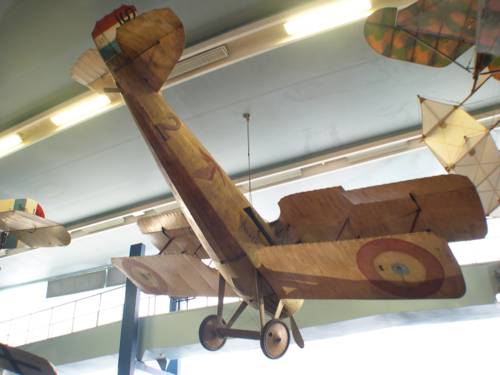
Georges Guynemer's "Vieux Charles" Spad VII (Le Bourget Air Museum)
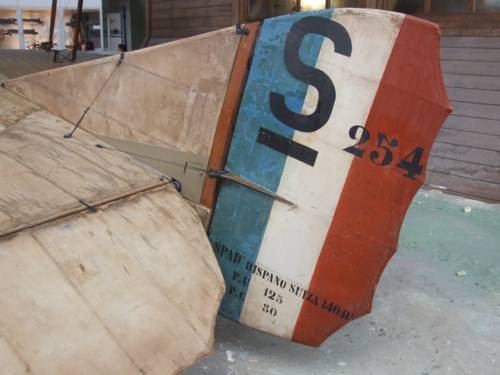
Georges Guynemer's "Vieux Charles" Spad VII (Le Bourget Air Museum)
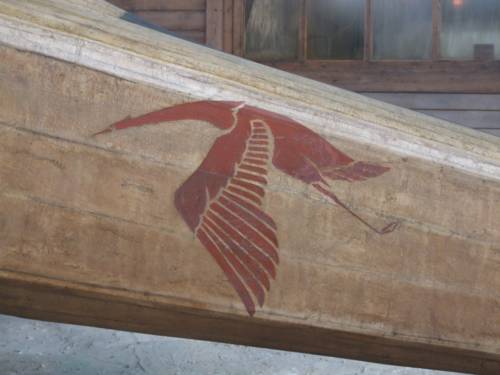
Georges Guynemer's "Vieux Charles" Spad VII (Le Bourget Air Museum)
The Spad VII was also used in small numbers by certain Aero Squadrons such as the 141st Aero Squadron that went into combat as part of the 4th Pursuit Group. The 41st Aero Squadron and 638th Aero Squadron might have been equipped with Spad VII machines, an assumption made based on photos in front of Spad VIIs. Ace pilot Raymond Brooks had had a Spad VII, named Smith I and later two other Spads Smith II and Smith III. His Spad XIII, named Smith IV, is at the National Air and Space Museum in Washington, DC.
The VII generally had the lines of the failed Spad SA C2, at least from the wings and the cockpit back. Its weakness was in maneuverability; the type could be out-turned by Nieuports and by several of its German opponents. The VII was one of the first fighter aircraft to use a V-engine (in this case a V-8) rather than the nearly universal rotary engines being used by all combatant nations. It lacked the agility of rotary powered aircraft, but it was surprisingly powerful. It could fly fast straight out and out dive more or less anything else in the skies. Its 140 horsepower engine and 125 mph top speed made it a screamer for its day.
Related Links: Nieuport 17 | Nieuport 28 | Spad VII | Spad XIII | Spad XVI | Fokker D.VII and other German aircraft | Halberstadt CL.IV | Fokker Dr.1 | Albatros D.Va | Caudron G4 trainer | USN Curtiss N-9H trainer
| USN Thomas Morse SC-4 | USN Hanriot HD-1
| USN Sopwith Camel | What was the first American fighter plane?
Events/Airshows
 Events/Airshows
Events/Airshows
Pilots/Aviators
 Raoul Lufbery
Raoul LufberyAce of Aces Eddie Rickenbacker
26 victories Quentin Roosevelt
Son of President KIA Frank Luke
18 victories in 17 days Eugene Bullard
1st African Am. Pilot David Ingalls
1st US Navy Ace List of USAS Pilots
Find a Relative American WWI Pilots
Mini bios
USAS Research
 USAS Videos
Reading List
USAS Videos
Reading ListWWI US Aviation Related Links
WWI US Aviation Credits War Wings
by Phillip W. Stewart WWI Maps
Units & Airfields Payne Field
USAS Aerodromes now... USAS Archives
Questions? Need Help? American Expeditionary Forces
WWI Doughboys in France